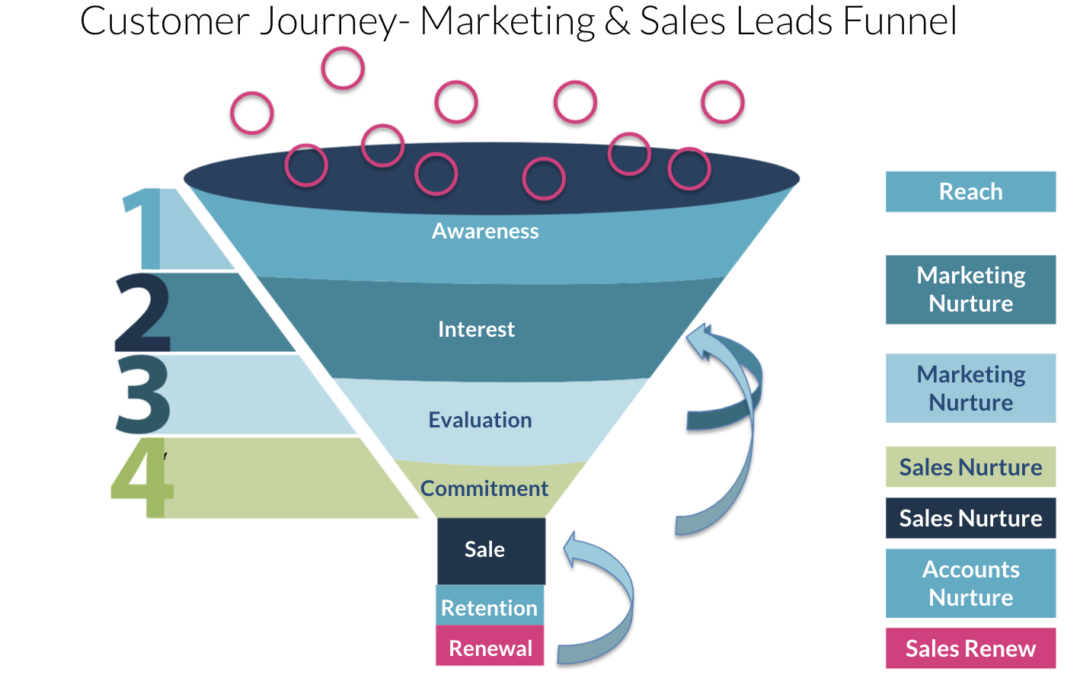Every year you’ll find new and trendy go-to-market approaches being touted by the ‘experts’. Some recent trends have included click funnels, growth hacking, Demand Generation, and ABM, and if done correctly they can work very well. There are no silver bullets and the real power in marketing is to test and understand when to use different approaches and why. This blog article is going to focus on optimizing Demand Generation and ABM together for the most effective marketing strategy.
It’s not a matter of which marketing and sales strategy to use, but the why, how, and when to best use them, and how to optimize Demand Generation and Account-Based Marketing (ABM) for a truly effective marketing strategy.
What is Demand Generation?
Demand Generation is a series of broad-reach marketing and sales initiatives focused on taking large quantities of targeted leads (individuals in your target market that have the characteristics relevant to your business, such as job title and responsibility, or purchase patterns and income, and reaching out via intentional marketing campaigns which are tracked and scored by software. The goal is to identify which of these leads are most likely interested in your product, and which leads might be getting ready to want to hear from your sales team.
Demand Generation is very powerful because marketing & sales technology allows volumes of prospects to be nurtured using personalized, targeted email marketing, content marketing, SEO, social media, and digital advertising. Every time one of your prospects engages with your content and website across multiple platforms, they are given a lead score. Those scores will be added up and used to identify and target even more personalized and effective marketing and sales outreach. Well executed Demand Generation is one of the most effective inbound marketing methodologies for B2B and even B2C companies, especially e-commerce.
Demand Generation utilizes the customer lifecycle funnel and nurtures ‘contacts’ through the different stages. Cold leads start at the top of the funnel. Those cold leads are marketed to until they engage, and are tagged as they move down the funnel. As they begin to engage, they are tagged as marketing attributed leads (MALs). With more engagement, they move down the funnel to become marketing qualified leads (MQLs), then sales qualified leads (SQLs). Leads that continue to engage are finally moved into the sale part of the funnel as a sales opportunity when you have determined they are ready.
What is Account-Based Marketing – ABM?
ABM is a targeted approach mostly for B2B where you identify companies (instead of contact leads), and then focus marketing and sales efforts on developing relationships with all of the relevant individual leads at those companies to generate sales. Where Demand Generation is taking a larger contact universe and using technology to zero in on targeted leads, ABM takes a more laser-focused approach to companies and contact leads at those companies that could champion your product and services.
ABM is typically more personalized and a slower process. It’s harder to manage ABM at scale but marketing & sales technology can assist your efforts here, too.
How and When to Optimize Each Approach by Using Demand Gen and ABM Together
Let’s talk about the why, how, and when to use Demand Generation and ABM.
Use ABM to test your product-market fit and go-to-market fit
If you’re a very early stage company or in a new market, using ABM as your primary approach is a great way to see if your marketing outreach and messaging resonates. You’re testing if you can capture the attention of your prospects and if you can sell your product or service into your target accounts. I always suggest starting with some ‘learning’ clients instead of your top-tier highest value prospects so you can tune up your marketing and selling – learn quickly from any mistakes you’re bound to make.
Use ABM when you have a small and finite prospect market
Another reason to focus primarily on ABM is if you have a very small and finite universe of prospects. I always recommend starting with an ABM approach when going into global markets as a first step. Since you already know who you need to reach, a focus on a very laser-targeted small list of prospects makes a lot of sense.
Use Demand Generation when your prospect universe is large
If, however, you’re not quite sure which market is best for you and the potential markets are fairly large (over 5,000 prospects), using Demand Generation as your lead strategy is a very smart approach. Before diving into Demand Generation, however, validate your product-market fit and go-to-market fit, so your marketing efforts are not wasted.
Demand Generation will allow you to quickly identify which target group(s) might have a better go-to-market fit from a messaging and outreach standpoint. It can also help you narrow down the companies that are most interested in your product or services and help you understand the right time to reach out. Once you’ve narrowed down the prospects, you can then focus again on ABM efforts for those specific leads and companies.
For many companies, optimizing and using ABM and Demand Generation together at different stages in the customer sales and marketing lifecycle is the key to velocity, growth, and sustained success.
Would you like to learn more about building your velocity and growing locally or globally? Contact us at Globig so we can help you optimize your marketing and sales funnels as well as train your team for success.
